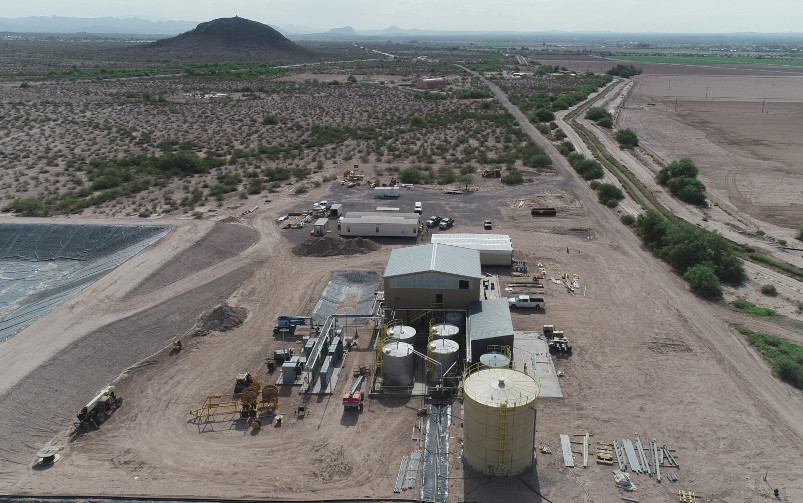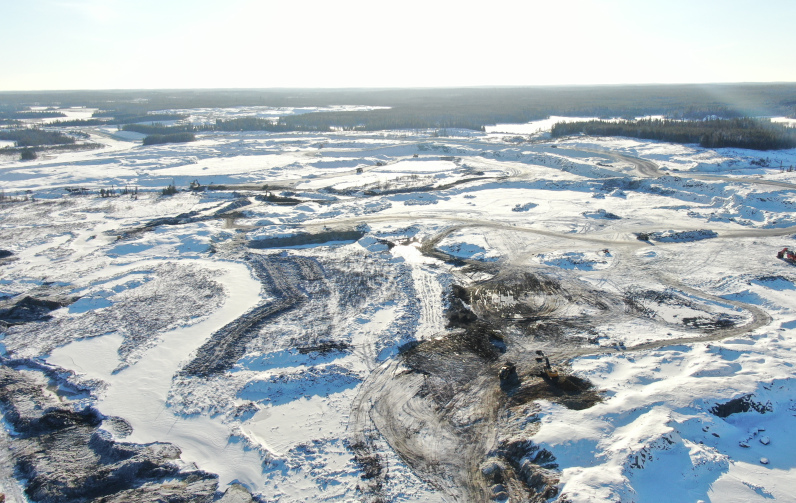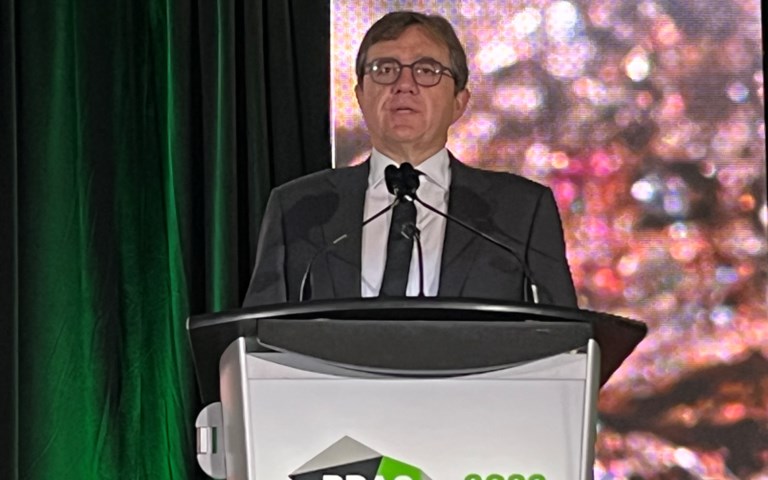Federal Minister of Natural Resources Jonathan Wilkinson opened PDAC convention. Courtesy of Carolyn Gruske
Attending his first Prospectors and Developers Association of Canada Conference, federal Minister of Natural Resources Jonathan Wilkinson took to the stage to open the event and explain why he feels Canada has a strong reputation in the mining sector – a reputation he expects the industry to capitalize on in the future.
“The mining industry is in the midst of a major transformation, one that represents a generational economic opportunity for Canada,” he said.
“While Canada is recognized the world over as the leading mining nation, it is perhaps our environmental, social and governmental expertise that truly sets us apart.”
Wilkinson also, however, acknowledged the assorted threats that the world is facing, including climate change (and the related loss of biodiversity), geopolitical instability and the domination of mineral supply chains – especially critical minerals – by single countries or regions.
“Today, we understand that mineral security and climate action are increasingly inextricably linked,” he said. That means not just exploring for minerals and metals and then extracting them, but processing and refining them as well as building up the infrastructure to create “downstream product manufacturing such as batteries and electric vehicles,” and doing so in such a way “that demonstrates to Canadians that we can undertake significant economic endeavours sustainably in ways that make life better for everyone in this country, including Indigenous peoples.”
Wilkinson recognized that mining is a significant part of the country’s vital and sustainable natural-resource-based economy, and as such, the government is investing in the industry, including earmarking $4 billion in the most recent budget to implement an “overarching Canadian critical mineral strategy – one that will speed up the development of our critical mineral resources and build up stronger ties with our trading partners.” Those partners include the U.S. (with which Canada is working to promote more open trade, supply chain integration, and an increase in American investment in Canadian critical minerals projects) and the European Union. According to Wilkinson, Canada is “advancing ongoing collaborative effort under the Canada-EU strategic partnership on raw materials, [to] identify concrete next steps in anticipation of the Canada-EU comprehensive economic and trade agreement bilateral dialogue on raw materials.”
Related: Why Canada is uniquely positioned to take a global leadership role in the clean energy transition
The government is also making efforts domestically to support the mining industry, especially its critical minerals arm. Two weeks ago, it launched the Regional and Energy Resources Tables, each of which, Wilkinson explained, will identify between three and five most significant areas of economic opportunity. The goal is to work with individual provinces and territories to create plans for resource development and to “align resources and timelines and regulatory and permitting approaches.”
Wilkinson made an effort to reassure mining industry attendees that the federal government understands that there have been roadblocks placed on mining development in Canada, and that there is work under way to reduce them.
“We will be working very actively and collaboratively with many of you in this room. But despite the significant opportunities, there are still some barriers that we need to overcome in Canada if we are to capitalize on these emerging opportunities to capture market share and meet our climate-action targets. For example, going forward, it simply cannot be the case that it takes up to 15 years to develop and bring [a mine] into production,” said Wilkinson.
“We exist at a time of enormous opportunity for the sector. It is up to all of us in this room, and elsewhere, to work together actively and urgently to ensure we seize the opportunities that lie before us.”




